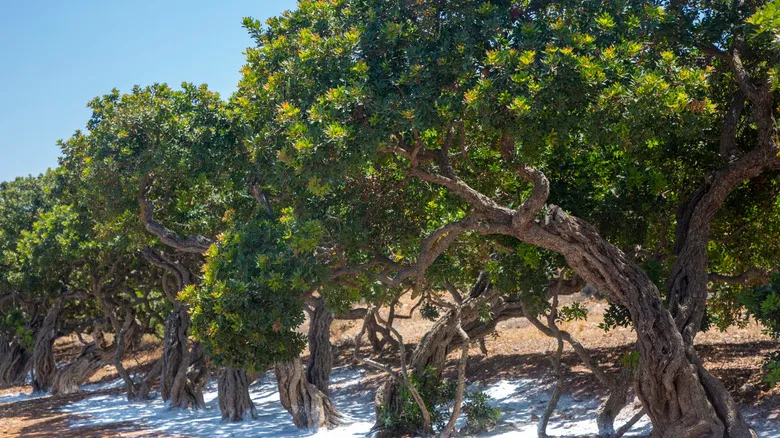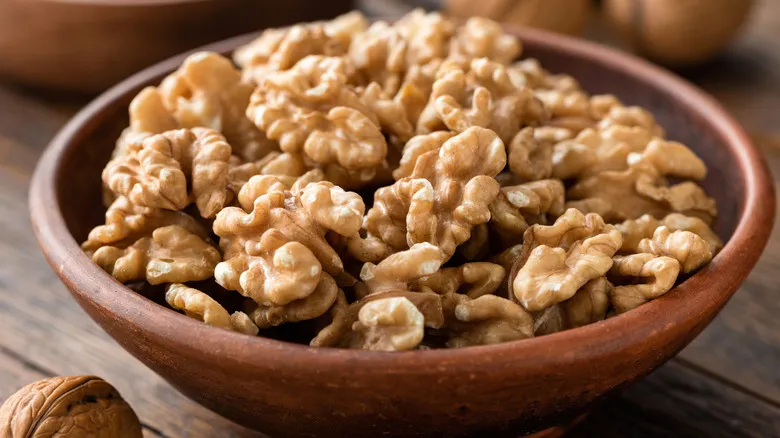Christopsomo's meaningful ingredients

Rich with distinctive spices and Greek Orthodox symbolism, many ingredients in Christopsomo serve as symbols of faith. Like most risen breads, Christopsomo is crafted from yeast, high-protein flour, sugar, and water, but it is the addition of ingredients like mastic, star anise, and mahlepi that makes it unique. While recipes vary by region, many use either mastic or star anise interchangeably. Mastic, known as "tears of Chios," is a resin harvested exclusively from mastic trees found on the Greek island of Chios. It has a subtle, sweet flavor with a touch of pine and represents purity. In fact, mastic (or Mastiha) is a key component of chrism, the sacred oil used for anointing in the Eastern Orthodox Church.
Mahlepi, or mahleb, is a spice made from ground black cherry seeds. It offers a fruity flavor with notes of vanilla and almond, but can become quite bitter if overused. A small amount of mahlepi is sufficient, so it is added sparingly. Like cherries, it symbolizes beauty and fertility. Most Christopsomo recipes also include orange juice. Citrus fruits were first brought to Greece by Alexander the Great, who introduced them from Persia. In Greece, citrus fruits are referred to as "esperidoeidí," a name inspired by the Garden of Hesperides, the mythical source of the golden apples that Gaia gifted to Hera, a present that conferred immortality.
Christopsomo's shape and decorations

In ancient Greece, the circle was a well-known emblem of completeness, harmony, and symmetry. In Christianity, it signifies God and eternity. Thus, it is fitting that Christopsomo is crafted in a circular shape and often embellished with a braided cross or an X, which symbolizes the Greek letter Chi, representing Christ. Additionally, it is customary to include decorative pieces of dough shaped like sheep, vines, plows, or grapes, symbolizing the hope for God's grace in sustaining the family's livelihood.
One of the most intriguing decorations and ingredients is the walnut. Grown in Greece for millennia, walnuts (known as karydi) are linked to Caryae, a Titan cherished by Dionysus, the god of fertility and wine. Upon Caryae's death, Dionysus transformed her into a walnut tree. As a representation of fertility and wisdom, walnuts are sometimes chopped and incorporated into the dough of Christopsomo, and it is common to place at least one whole walnut into the dough before baking as decoration.
Recommended

Why McDonald's Vegan Burger Failed In America

Why Anthony Bourdain's 'Grandma Rule' Is Genius For Trying Food When Traveling

The History Behind Cracker Barrel's Iconic Gift Shop

8 Restaurants That Were Once Frequented By Al Capone
Next up

